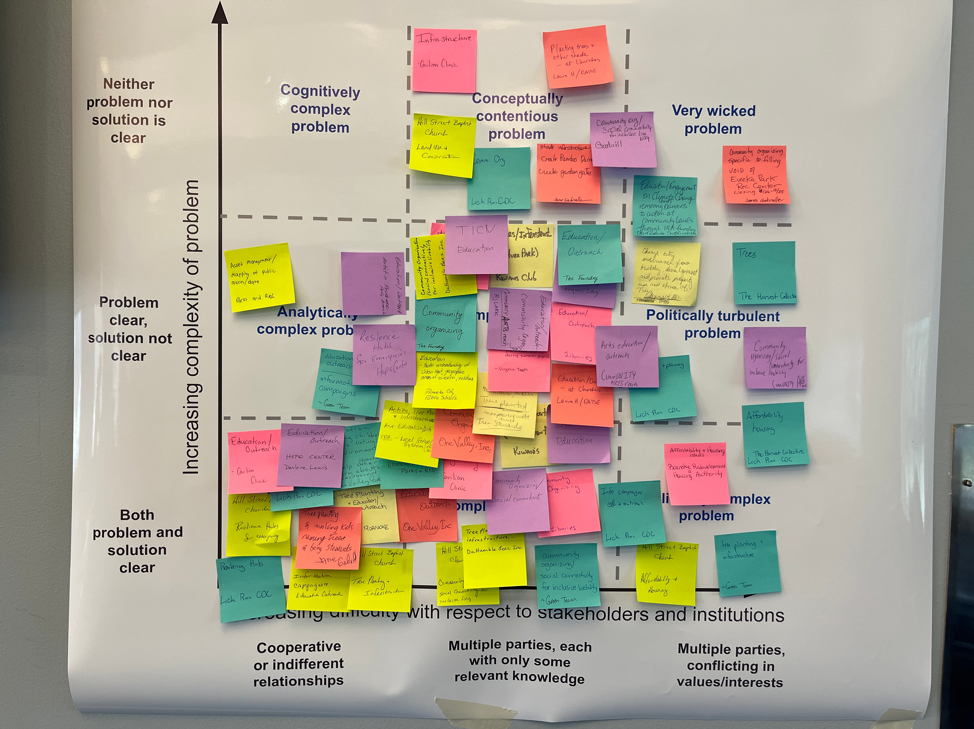Understanding the Wickedness of Problems and Capacities to Address Them
Malle Schilling, Research Assistant on H.O.P.E. project and PhD candidate in Engineering Education at Virginia Tech
Published March 13, 2024Bringing different people together to talk about problems we all face can be challenging. We all have our own perspectives on the problem and its complexity or wickedness, and we all have different capacities to address it. To further complicate this, it is also hard for us to know who might share our perspectives, capacities, and approaches to problem-solving. However, bringing people together, talking about problems, and talking about what we can do about it are necessary for moving forward and working together.
This is something we explored as a part of the first All Hands Meeting, where groups from around Roanoke came together to learn more about the different project activities and purposes of the HOPE for Heat Resilience project. We asked those in attendance at this meeting to reflect on the problem at hand and their perspectives on it, and what stakeholders were well-represented in the All Hands group and those that were maybe missing. What we quickly realized was that (1) people had varying perspectives on the problem and the complexity and (2) people needed to talk to each other and get to know the people in the room at the All Hands meetings. To help us think about the reflection responses, we used a framework from Alford and Head (2017) to classify how the representatives of Roanoke’s’ various organizations and communities were thinking about heat and heat resilience:

Different organizations and individuals talked about problems ranging from well-bounded problems with straightforward solutions (tame problems) to systemic problems rooted in systems of power and oppression (very wicked problems). Mapping reflections onto this figure allowed us to see that there were useful things in common across responses and useful differences that could create meaningful conversation between organizations. To end the second All Hands meeting, we asked those in attendance to identify and map the capacity their organizations had to address different levels of problem complexity on a poster version of this framework.

We then wanted to ensure that people had time to talk to each other and connect over their responses—encouraging people to talk about complexity and differing responses about the same problem. The room was buzzing as people talked—they were connecting over shared capacities and activities and discussing their perspectives on problem complexities. We hope this discussion and connection does not end with this meeting but that it sustains as we all continue to work together on this project.
Alford, J., & Head, B. W. (2017). Wicked and less wicked problems: A typology and a contingency framework. Policy and Society, 36(3), 397–413. https://doi.org/10.1080/14494035.2017.1361634